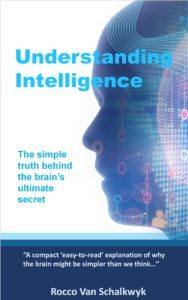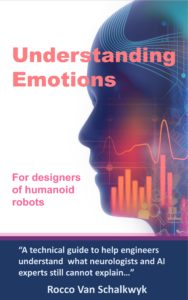Answers provided by Rocco Van Schalkwyk (alias Ano)

What is the Xzistor Concept brain model?
The Xzistor Concept brain model is a simple functional model of the brain that offers a complete principal understanding of the brain and explains how brain functions can be written in mathematical terms and translated into computer programs to control robots – which will provide them with intelligence and emotions that are principally no different from that of humans.
How did you develop the Xzistor Concept brain model?
It started off with a personal quest to find a simple explanation of all that happens in the brain. I firmly believed there was no magic or trickery, just physical mechanisms that had to be based on some logical architecture. It is this architecture that I went in search of.
After some years I found an explanation that appeared to cover everything. For the next 20 years I kept my discovery secret while I built simulations and machines with real intelligence and emotions. Having recently decided it will be safe to release this technology into the public domain, I have decided to invite responsible researchers and groups to be part of the next exciting phase. This phase involves building the most advanced robot yet with real intelligence and emotions based on the Xzistor Concept brain model. Click on the image below to view a short video on the history of the model:
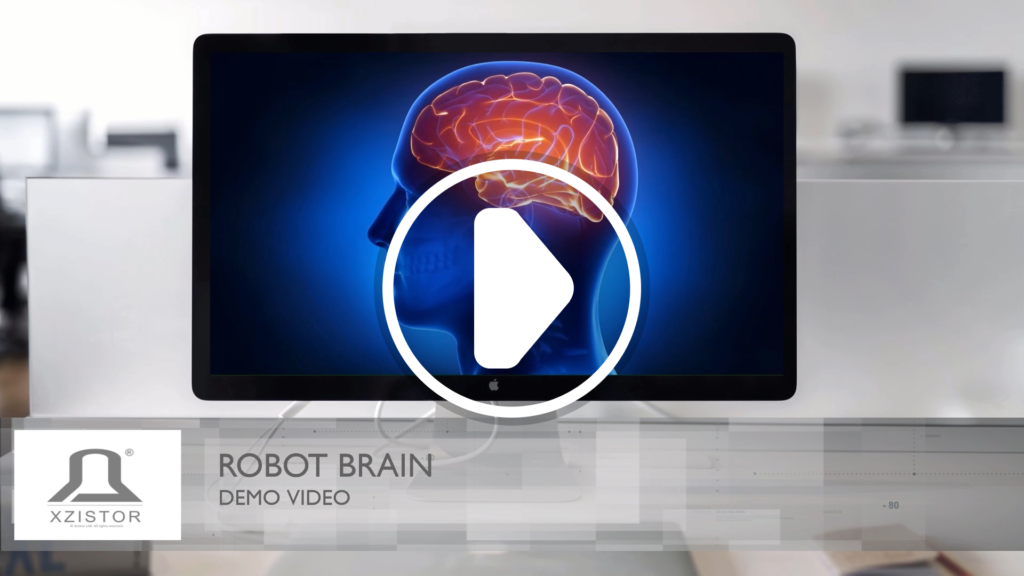
What can the Xzistor Concept brain model do?
Apart from demystifying the brain and helping us understand it based on a logical set of building blocks, the Xzistor Concept brain model allows us to build virtual and physical robots with humanlike intelligence and emotions as part of a fully integrated architecture. In doing so it also provides clear explanations (in mathematics) of how subjective states are generated in the brain, including: hunger, anger, pain, fear, joy, curiosity, addiction, learning, aggression, euphoria, fatigue, depression, phobia, thinking, dreaming, sexual arousal, language, love, humour, intuition, independent problem-solving, creativity, innovation, etc.
Here is a rather lengthy video on the Xzistor model (history and key aspects):
Video 1: Xzistor Mathematical Model of Mind
Is the brain model scalable?
The Xzistor Concept brain model can be used to drive the simplest of simulations (Excel spreadsheet!) and simple single-board robots like Lego EV3, Raspberry Pi, Arduino, etc. but also highly sophisticated humanoid robots. Scaling requires no changes to the architecture – it just requires more sensors, utility functions (those generating emotions) and effectors. It is thus simply a case of ‘more of the same’ and moving to simple neural networks when data gets voluminous.
How does the Xzistor Concept work?
The Xzistor Concept brain model mimics the human brain – not at a neurophysiological level, but functionally. The model provides for a simple way of defining intelligence and emotion, and these are fully integrated into a reinforcement learning architecture. Obviously, going from theory to practice involved many minor technical innovations which now form part of the body of knowledge currently included in the IP base of the model.
How is intelligence defined by this model?
Scientists can currently not agree on a consensus definition for human intelligence that can be translated into mathematics and programmed into machines. The Xzistor Concept brain model uses a simple approach to define intelligence that can be written 100% in mathematical terms as explained in a short (63 pages) easy-to-read guide called Understanding Intelligence: The simple truth about the brain’s ultimate secret (by Rocco Van Schalkwyk on Amazon). Free early draft preprint version on ResearchGate available here.
How is emotion defined by this model?
Scientists can currently not agree on a consensus definition for human emotion that can be translated into mathematics and programmed into machines. The Xzistor Concept brain model uses a simple approach to define emotions that can be written 100% in mathematical terms as explained in a short (45 pages) easy-to-read guide called Understanding Emotions: For designers of humanoid robots (by Rocco Van Schalkwyk on Amazon). Free early draft preprint version on my ResearchGate page available here.
How has the Xzistor Concept brain model been verified?
The Xzistor Concept brain model was built into a simple virtual agent called ‘Simmy’ in a 3D learning confine (C++/OpenGL). Click on the image below to see a short video. The simulation worked 100% as a simplified course-grid simulation. It gave rise to very lifelike behaviours, including facial expressions constantly reflecting the virtual agent’s net emotions.
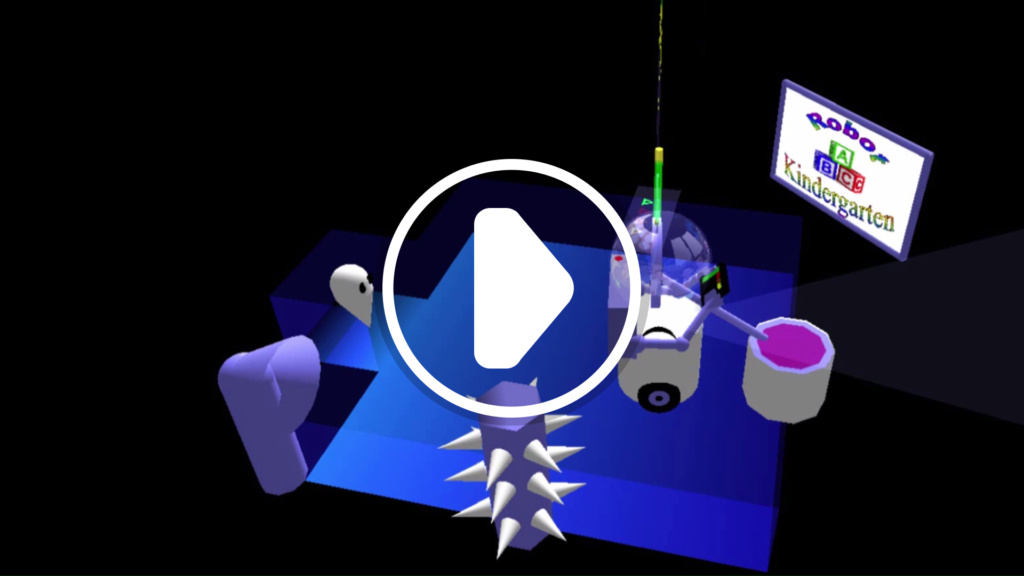

The model was then translated into Java and ported to a small physical robot called ‘Troopy’ in a similar learning confine. Again, the robot showed the same lifelike behaviours with no anomalies. The conclusion was that there is no exception to the generality of this model.
Click on the image below to see a short video about Troopy:
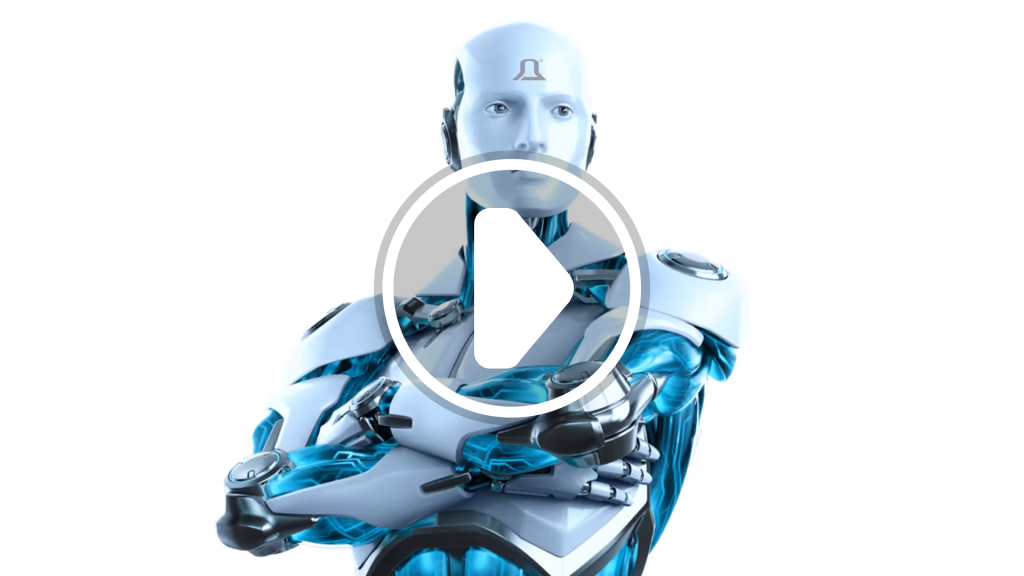

What differentiates the Xzistor Concept brain model from the other models out there?
Over the years there have been numerous projects that were going to ‘crack the brain’. The projects were going to build intelligent rat brains ‘neuron-by-neuron’, complete a cat brain within first 5 then 10 years and ‘baby’ robots were going to show humanlike emergent intelligence and behaviours. There were also separate dedicated projects to try and build emotions into robots. None of these projects resulted in robots able to demonstrate convincing levels of emergent intelligence and emotions in an integrated manner. To quickly differentiate the Xzistor Concept brain model from other brain models, we simply ask the following question: Can other models provide the following brain states and behaviours based on a fully integrated mathematical model: humanlike intelligence, autonomous problem-solving, real subjective emotions which drive behaviours and are fully integrated with intelligence, thinking, dreaming, sensing, reflexes, hunger, anger, pain, fear, joy, learning, curiosity, addiction, euphoria, fatigue, depression, phobia, thinking, language, love, intuition, forgetting, etc.
Simply put, when we go to the shopping mall today, we don’t see robots with humanlike intelligence and emotions greeting us at the door – as would now be possible with the Xzistor Concept brain model. The other approaches simply did not principally solve the brain – and this led to 50 years of stagnation in brain modelling (some call it the AI winter). The world never entered the promising eras that Asimov and Kubrick had spoken of. And Bill Gates’ robot-in-every-home never came to fruition. With the Xzistor Concept we can change that today – and we can stop calling smart doorbells and cars that park themselves AI!
Have you solved Artificial General Intelligence?
Lol! I think I might have! Now the funny thing is I wasn’t aware of all this hype around AGI and the fact that it has over the years become the holy grail of AI. Only after I have completed my journey into the mind and built and tested my virtual and physical robots did I sit back and start to look around at who I should talk to about my model.
After spending 25 years working on this model in absolute isolation, I started reading about some of the world-leading individuals in AI and saw them mentioning this ‘Quest to solve AGI’.
And then the other day in the shower I realised: That is exactly what I have done!
Let me explain.
I can currently not think of a single brain state or behaviour which I cannot explain or in principal replicate in robots using my model. If you name a brain states now like love, jealousy, pity, insight, anger, depression, etc – I will first unpack these into my definitions of emotions and intelligence, and add in the effect of reinforcement learning over time. That should do it!
For instance, anything that we love, like, appreciate, adore, crave, admire, cherish, respect, etc – can simply be explained by the definition of a Satiation source in my model (see my guide on emotions).
Now, I have only built and tested single room learning confine robots (virtual and physical) running on digital instantiations of my model, but the amazing thing about the brain is that it is highly semiotic in nature. So, using the Xzistor Concept architecture, the algorithms currently running serially can be made to run in parallel using very simple neural networks requiring only the exchange of representations (symbols) based on agreed protocols. This means your brain is just a machine that exchanges symbols (some which change are the result of learning) as it goes from taking sensory inputs to generating your behaviours – and everything in between is what you experience as ‘existing’ or ‘awareness’.
We can build machines this way that will have emotions and intelligence comparable to human beings – not just principally but at the same fidelity as humans. But we must not forget that learning will take time – as is the case with humans.
There is nothing about the brain that I feel I have not solved, but always remember my aim was to only solve emotion and intelligence – and not the biological housekeeping functions that happens in the brain (e.g. heartbeat, blood pressure, metabolism, endocrine system). I have also not attempted to explain the neurophysiology and how all the different areas in the brain relate to my theoretical model – this will be a very interesting next project for me!
Note: I have recently started a project on ResearchGate to develop an article explaining why the Xzistor Concept brain model could be able to solve Artificial General Intelligence (AGI) – it is draft and high level but I always welcome feedback from those interested in my research. Please see the draft article on my ResearchGate page and join the project!
Update on AGI project on ResearchGate: I have just added an update to my AGI project on ResearchGate. The Xzistor Concept solution requires no further work – the model is mature. I have just reviewed the state of the art in AGI, and I thought I should make the point that the Xzistor Concept needs no further work – it is complete. In the 20 years since I provisionally patented it first, it has changed very little. Really, I just added some aspects because of new technology. I might add more refinements when quantum computing becomes accessible and affordable. But I think it is important to state the fact that there is NO remaining work to be done!
Now, it is just about building more sophisticated robots based on the simulations and physical robots I have already built. Now it is just fun stuff! 🙂
In short, whilst I see no other brain models that are of a maturity to offer an immediate solution to AGI – the Xzistor Concept brain model is ready to do so today, but it is important to understand that although the cognitive architecture is mature – the technology to support it might not be ready. There must also be no illusion as to the fact that an instantiation of this model will require extended periods (potentially years) of learning in a real-world environment just like humans. These constraints to AGI are discussed in my latest preprint paper The Xzistor Concept: a functional brain model to solve Artificial General Intelligence.
Will it be safe to introduce this technology into the public domain?
From the outset the immense power of this simple architecture was immediately apparent as well as the ease with which it could be scaled to very sophisticated robots. Hence a process was embarked on to first develop the model to a high level of maturity in order to allow proper risk assessments to be performed. This meant the model was kept out of the public domain for many years while virtual and physical embodiments were thoroughly tested. Only after finalising these comprehensive software and hardware testing and verification, the decision was made that it was safe to share the concept with others. Only the high-level theory around the model is made public, whilst application detail around the specific products will be treated as product-specific IP.
The tests showed that the digital (serial) embodiments will at first only be able to operate in a restricted learning confine no more elaborate than a single room. The safety assessment showed that neural applications will take some time to develop and when the embodiments reach capabilities comparable to that of humans, it will still have to be trained for many years to gain intelligence and understand ‘context’. For instance, when the Xzistor neural robot reaches the age of 15 years, its behaviour will be comparable to that of a 15 years old child. We know that the regulatory provisions that will be in force by that time will safeguard these robotic programmes as we are passionate about ethical AI and actively involved in developing these regulations. Bottom line is we have carefully assessed the worldwide progress toward brain models based on reinforcement learning and believe this model will ultimately be discovered by someone else in time. It will therefore be better (safer) to develop it now in a manner where it is closely monitored by a group of benevolent scientists adhering to stringent ethical AI protocols. By protecting the many trade secrets discovered during the process of going from the theoretical model to a complete implementable solution, the efforts of rivals or possible malevolent actors could be delayed by 50 years (even more). Many of these trade secrets constitute very innovative scientific breakthroughs in their own right and would require some challenging paradigm shifts by other scientists to solve. One wrong turn on the path of developing such a model could delay progress for years, if not decades. One just has to think about detail around the mechanisms underpinning aspects like learning, pain, fear, euphoria, navigation, aggression, coordination, addiction, depression and transacting emotions into intelligence, curiosity, etc…
Who owns the IP?
I am the sole owner of the IP. I took out 2 provisional patents in 2000 and 2002 describing the architecture. The fact that this architecture had stayed the same for over 20 years should tell you something about this model. These provisional patents were just to put a date to my scientific discoveries. From the beginning I decided to rather protect my IP by safeguarding the many trade secrets that arose during developing of the final solution. I decided this will be cheaper and more effective – and avoid legal complications that could detract from my very enjoyable intellectual journey!
Did you look at other forms of AI?
Not really. I am a mechanical engineer with no formal training in AI. Something just told me to stay away from anything in the field of AI that anybody else was working on. Besides, it was supposed to be a personal quest to stop me from getting bored with life. I cannot be happier to have dedicated 25 years of my life to developing this model and testing it on different virtual and physical robotic platforms. I did this in absolute isolation and knew nothing about the AI winter everyone was talking about. And thankfully I never capitulated to…big data (eeuw!)
Any advice to young AI enthusiasts?
I must be careful what I say. I don’t want to advise anyone not to go to university and learn about what others call AI. But I would say, if you are truly interested in understanding and mimicking the brain rather than developing machine learning algorithms, consider familiarising yourself with this model. I am saying this because of what this model has done for my understanding of the brain – and the insights it brought about life in general. The new generation of AI designers will have the exiting possibility of using this model to build anything from simple to highly sophisticated machines with intelligence and emotions. We can start doing this today!
What is next for the Xzistor Concept brain model?
I am ready to start sharing my discovery with others now and grow this technology into a new humanoid robot industry – in a safe and responsible manner. We have waited long enough for this moment. In terms of the commercial side, I don’t want this to be just another venture capitalist exercise e.g. mobile app or platform solution. I want this to be a global adventure that scientists and the public will get drawn into – a kind of a SpaceX adventure. To achieve this, we need to show quick progress – something we can do with the Xzistor Concept because we will be building a Mark II based on an existing Mark I. To make this a commercial success an innovative approach will have to be followed to show all the AI programmes around the word the value of this model and the savings that could be achieved in terms of development costs for reinforcement learning solutions – both for virtual agents as well as physical embodiments. They could be saving billions by diverting their many decades of effort to understand and replicate the brain towards this approach. A good minimum viable product that should be in high demand amongst hobbyists and all the way up to strategic national research institutes, will be the Xzistor Concept Brain Wizard – a simple program that ask you a few questions about your robotic application and then provide you with an executable file to run as your robot’s brain program. One can also now add intelligence and emotions to computer game characters and virtual reality simulations. There are a myriad other options e.g. I have just co-authored a conference paper on how this approach can be used to provide a smart city with intelligence based on ‘emotions’ driven by ‘utility functions’.
That’s why I say: With the Xzistor Concept we can see a 1000 years into the future. I believe those owning this IP will come to dominate the world economy and be absolutely instrumental in shaping the future of this planet. This type of scientific discovery only comes around once in the evolutionary journey of an intelligent species…
What do you personally want to achieve with this model?
For me this has been a 25-year journey of discovery that has fascinated me everyday day of my life since it started. It saved me from getting bored with life and gave very special meaning to everything I did. Now I have completed my journey and I am looking at the next adventure – that of sharing this model with the world. Because so many of my learned colleagues in the AI industry are just as obsessed as I am, it will take some doing to get them to abandon their individual assaults on this historic riddle and convince them that I have found the ultimate (and probably only) complete solution. I expect reluctance, ridicule and even resistance but will enjoy seeing them come around to this model. I have consistently observed that, once I start explaining the model to someone, they never turn away from it again and only get more and more interested.
I know the Xzistor Concept brain model will open up more magical worlds for those who make it the basis for their exploration of the brain. I stand ready to support these individuals and groups and although I am looking for a return on my 25 year investment, I am also looking forward to collaborating with those who want to use and expand this model – especially the bright young AI minds who can bring so many amazing new products and refinements to the world using this model. This mean I will be condemned to more head-scratching and late nights in the robot room – I cannot wait!
What are the business risks?
This invention is not just another handy mobile app that will go viral. The attraction and interest in this invention will be at another level. It will be the research interest and the sense of adventure all the previous ‘we are going to hack the brain’ projects had failed to deliver. We can revive that interest by showing real progress and delivering robots with real intelligence and emotion. The model stands on its own merits as a simple-to-understand, proven solution that can provide robots with real intelligence and emotion and will now begin to make its own way into the world. There is a risk if the unique nature and simplistic beauty of this model is not adequately explained to stakeholders, that its phenomenal power and potential will not be appreciated. Then researchers and robot builders might continue down their own paths believing they can achieve something similar. They will quickly learn that it will save a lot of time and effort to adopt this model, because they will see others using this model make rapid progress.


Watch on YouTube: https://youtu.be/7QXV6RrlShA
There is always risk with business but here is the single solution to the brain that can repair all that has gone wrong in terms of understanding the brain and reviving the world’s interest in the brain and AI.
The products that will be developed within short timescales will get a lot of media attention and grab the imagination of the public as we had hoped would happen when researchers promised us artificial brains in the past.
Investors should at least in part be prepared to invest in a personal journey of discovery, owning a part of the future and a chance to oversee the safe development of a new AI industry that will benefit all of mankind. Many have predicted that this will be the last trillion-dollar industry on the planet – but people should get involved for moral and intellectual reasons as much as for material gain. Mobile apps, platforms and everyday gizmos could make more money in the short terms – but I do believe this will in time become a unicorn, perhaps the biggest in history.
How will you convince the world you have cracked the brain?
I will let the model do the work. I have carefully observed those who read my guides on intelligence (64 pages) and emotions (45 pages). Once they have read it – they are on my side. For anyone that is sceptical, I would recommend that you read these two guides with a critical eye. Look for anything that might be factually incorrect. But do not reject my approach outright if you cannot find concrete evidence of a mistake – please remain openminded.
I will of course be surprised if you find a mistake in the model because I have lived with it for over 20 years and seen it work every day in embodiments over and over again. I have tested it from all angles – I know it works 100%.
At this point I would recommend that you also look at the demo videos on YouTube around this model: https://www.youtube.com/channel/UCTJHNIGXGDJbSmgi_SDW4Wg
I want you to get to the point where you say: ‘I have read your guide on intelligence very carefully and cannot flaw anything you say in it – in fact it is exactly how my own mind works and I think it is a clever new explanation of intelligence.’
Next I want to hear this from you: ‘I have read your guide on emotion very carefully and cannot flaw anything you say in it – in fact it is exactly how I experience emotions and I think it is a clever new explanation of emotions.’
Again, do not reject my descriptions of intelligence and emotions without pointing to a specific error, because you will be denying yourself a very interesting journey of discovery into the brain and miss out on a myriad of new insights. I am not the one that will lose out if you do not believe in my model – I have had a magical ride and made my life’s dream come true. But it might really be a missed opportunity for you.
Start today with a critical review of my two compact guides – this is how scientists are supposed to work. If you cannot find something that is wrong – give the model a chance. You can ask me any question and you can make them as difficult as you possibly can. I am confident in this model because of the verification tests and working robots I have built. If you ask me a difficult question, I will just look at the robot by my side and say: ‘Let’s just see how it works in my friend’s brain over here?’
And I will provide you with an explanation based on a robot already successfully running on the brain model. But I will need you to have read the two guides to make sure you understand my approach and explanations.
Caution: If you reach out to an AI expert and ask them their opinion on the model, make sure they provide you with proper reasons for either supporting or rejecting it. Ask for the facts – preferably something mathematical and not philosophical. Also, remember none of them could come up with something similar to this fully integrated model so they will have nothing to benchmark it against. If they are skeptical, they must provide detail explanations and not just express an opinion or gut feel. Do not let them drive you away from this model as it is a truly unique opportunity to really understand the brain at a functional level. It has completely changed the way I think about the brain, life and it has given me a totally different perspective on the future!
Do you have some photos and videos about the model?
Sure!
Click on the image of ‘Troopy’ below to go to the photos:
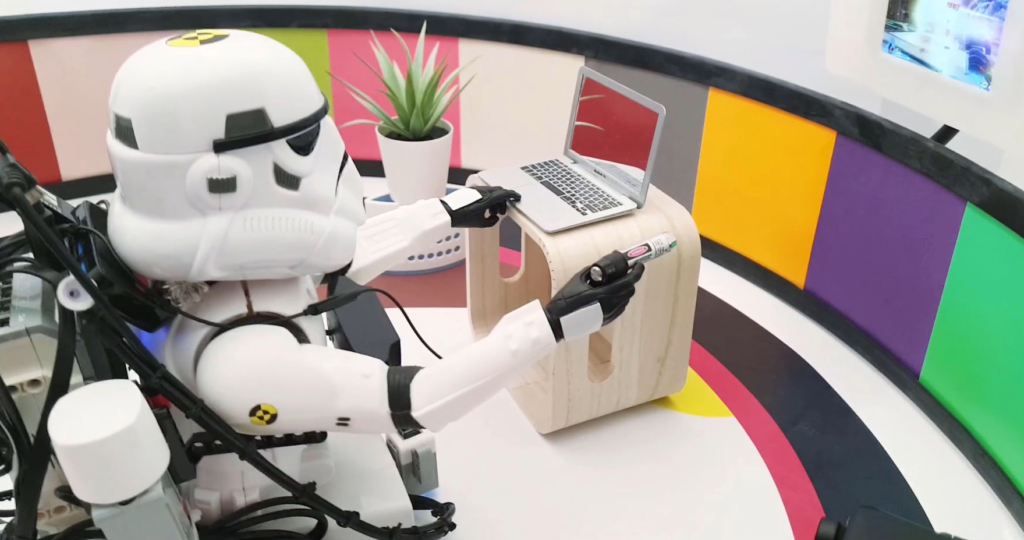

And click on the image of ‘Simmy’ below to view more photos:
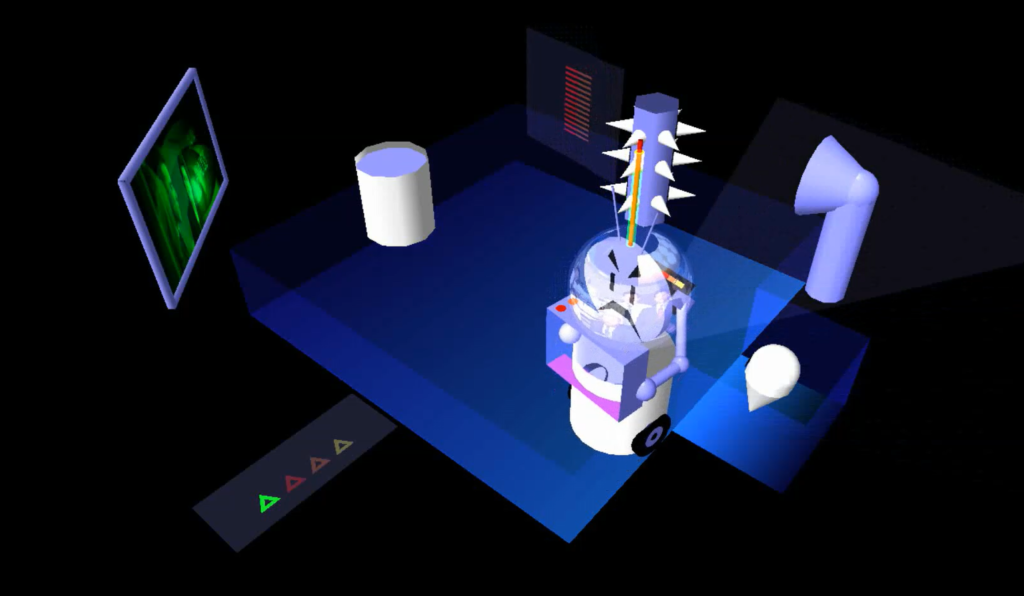

And for the videos click on the image below to go to the Xzistor LAB YouTube Channel.
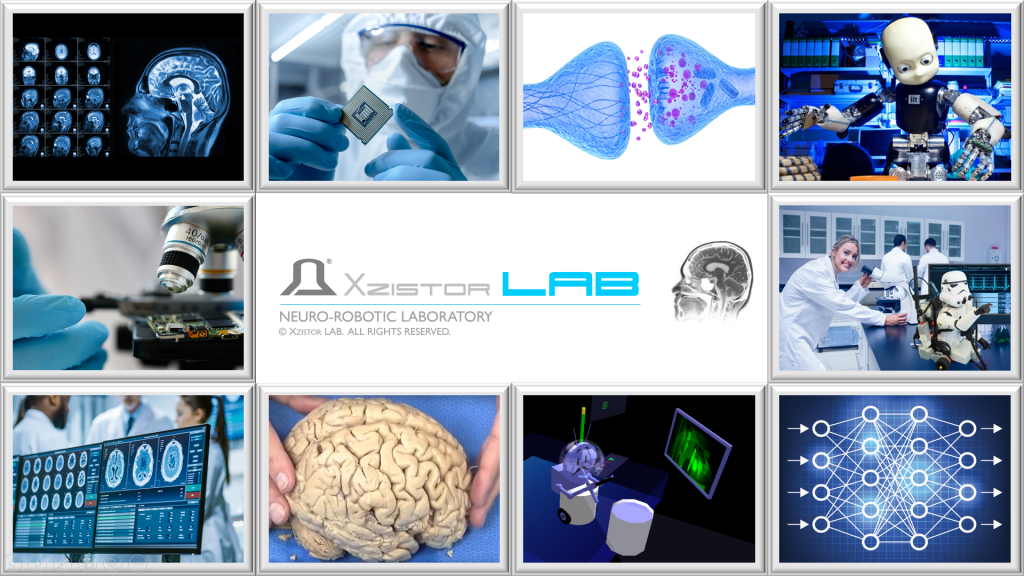

How can researchers or students get involved with this model?
The best way to get into the Xzistor Concept model is to read my two guides on intelligence and emotion. If you do not want to spend money, you can look at some early draft preprint versions I uploaded to ResearchGate for peer review.
You can then see if your AI ambitions align with the definitions of intelligence and emotion in these books and follow the guidance on how to build these into your robotic applications. You will also learn a lot from my demo videos on my YouTube Channel: https://www.youtube.com/channel/UCTJHNIGXGDJbSmgi_SDW4Wg
If you have any questions about the Xzistor Concept brain model, you can email me at xzistor@live.com.
For groups I might be able to make myself available for group discussions or Question and Answer sessions depending on my availability. Again, I can be contacted at the above email address.
I expect some difficult questions and will enjoy discussing these! I love a good challenge!
